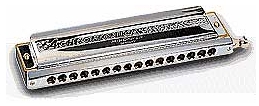The morning of July 4th is a great time for urban bicycling. There is very little traffic, and there is time to absorb your surroundings. Chicago has quite a few bike paths for a big city, so the intrepid bicyclist can have a comnbination of street and park views.
Heading west from my house, I picked up the North Shore Channel Trail. This path runs eight miles between Green Bay Road in Evanston to Lawrence Avenue on the northwest side of Chicago. I picked up the trail at Main Street, about 2 miles from its origin. The path wanders along side the North Shore Channel, which was originally built as a drainage canal around 1908. The original purpose of the drainage canal was to flush the sewage in the North Branch of the Chicago river down the Chicago Sanitary and Ship Canal. The 'ol channel can get a little ripe at times, but it isn't as disgusting as it was in years past. You can even see folks conoeing on the turgid waters, and there are fish that manage to survive in there (I wouldn't recommend frying them up for dinner, however). The first couple of miles run along side busy McCormick Road, past several large public scuplture pieces (this is the "Sculpture Park" maintained by the City of Skokie). When you head south of Petersen, the trail becomes a pure delight. It ducks under the Petersen, Bryn Mawr and Foster streets which allows bikers to avoid traffic lights and cars. There are acres of parks, playgrounds, tennis courts, baseball diamonds and even a couple of swimming pools. The trail and its setting are marvelous; you even get to ride past the only waterfall within the Chicago city limits.
At Lawrence, you pop out into Albany Park, a decent neighborhood and the heart of Chicago's Korean community. I kept pedalling south on California Avenue to Montrose. Horner Park is at that intersection - a 55 acre space with nine softball diamonds, tennis courts, basketball courts and a fieldhouse. The park is named after Henry Horner, the first Jewish governor of Illinois, who served from 1933 until his death in 1940. Horner Park is one of the cornerstones of the Irving Park neighborhood. I rode through it and kept going. The northwest side of Chicago is a very mixed bag. Logan Square is pretty much fully gentrified now, but head a bit south of there and you get into some interesting urban grittiness. And if you keep heading down California, you run into Humboldt Park.
Humboldt Park really is two places in Chicago. The first is the neighborhood of Humboldt Park, a Puerto Rican enclave that is the only offically recognized "Puerto Rican Neighborhood" in the mainland United States (New York, with its huge Puerto Rican population, doesn't recognize any of its neighborhoods as "Puerto Rican."). The area gained this status beginning in the 1950's, when a major influx of Puerto Ricans replaced the Germans and other residents of the neighborhood. The second place tied to the words "Humboldt Park" is the 207-acre paradise that anchors the northwest side. I love riding my bike through this oasis; it has ponds, streams, nature preserves, a boat house and the only Chicago beach that isn't on the shore of Lake Michigan. It is also the temporary home to a cadre of homeless folks. They are in the shadows, sacked out under bushes or on benches. Some pitch tents to establish more a more formal abode. Since the surrounding neighborhood has a significant amount of poverty and drug-related activity, the park is a refuge for many less fortunate types.
Humboldt Park has to be one of the most interesting urban parks in the nation, and I don't think it gets much respect.
It was about a 22 mile ride, round trip. The scenary varied from verdant and serene to pot-holed and industrial. I saw well-to-do folks in Ravenswood Manor, hipsters in Logan Square and trembling drug addicts in Humboldt Park. This is the City of Chicago. It is a formidable enterprise.


